It's in the Eyes!
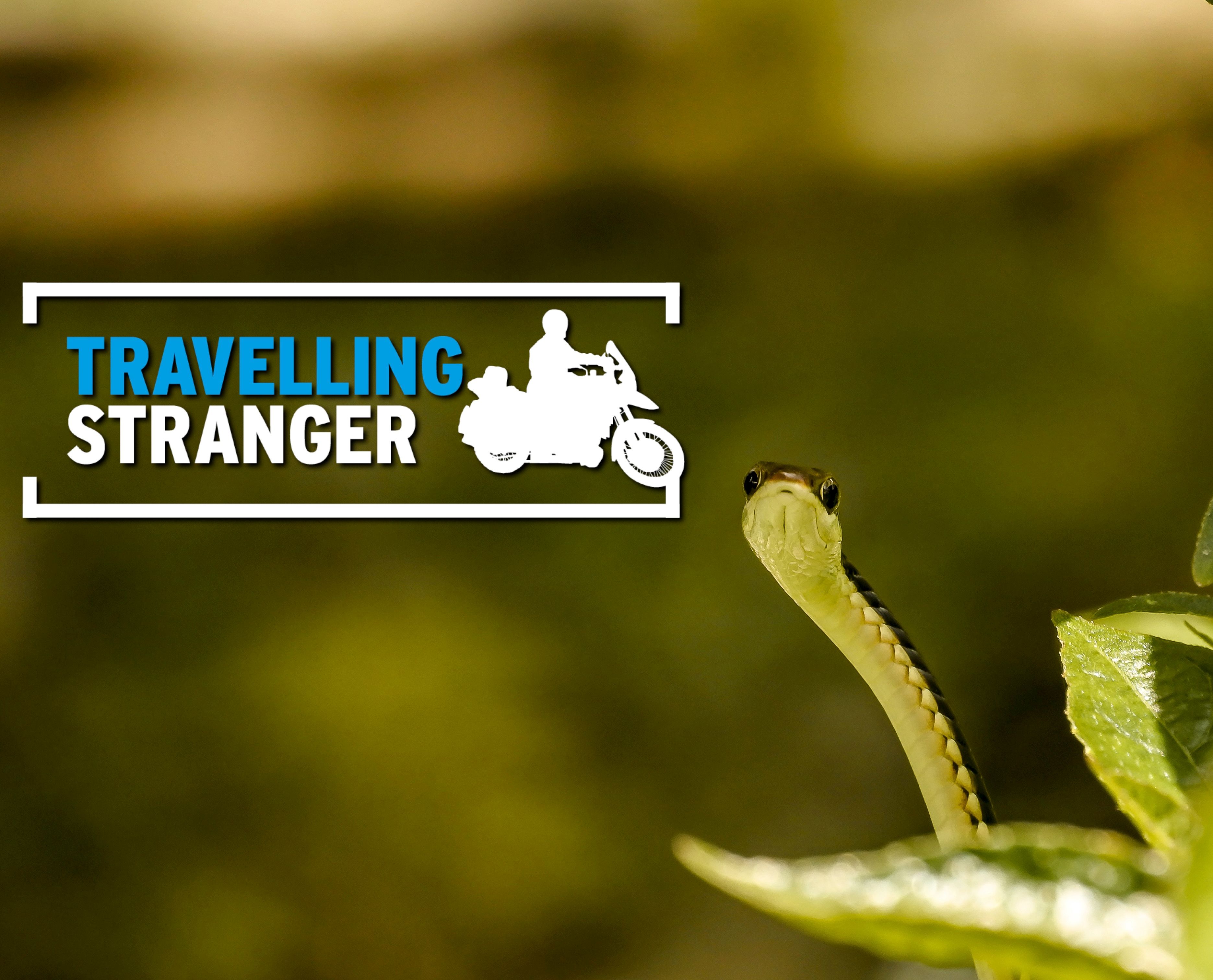
All pics by author
Hello my Steeming Pals!
Italiano
Seguendo i video tutorial di tecnica fotografica presentati da Joel Sartore, un fotografo professionista che ha collaborato più volte con il National Geographic, notai come egli faceva spesso cenno all’importanza di catturare soprattutto gli occhi nei ritratti fotografici di animali. Secondo Joel riprendere gli occhi significa rendere le proprie fotografie interessanti ma comporta essere disposti talvolta a strisciare per terra, pazientare nell’erba umida o magari arrampicarsi su qualche albero per catturare i tratti caratteristici del volto di un animale nascosto. Essere determinati in questo senso, secondo il presentatore può fare la differenza tra un buon risultato e foto scadenti.
English
While watching Joel Sartore’s photography video tutorials I remember how this well known National Geographic photo journalist often stressed the importance of capturing the eyes of animals when dealing with portraits of pets and wild life in general. He mentioned that this sometimes meant getting uncomfortable, down on the ground in the dirt, dealing with mud, climbing trees and of course using a decent zoom lens to capture those important animal facial features on camera. Putting in the effort to capture good close ups could mean the difference between taking decent animal portraits and pictures that mean little indeed.
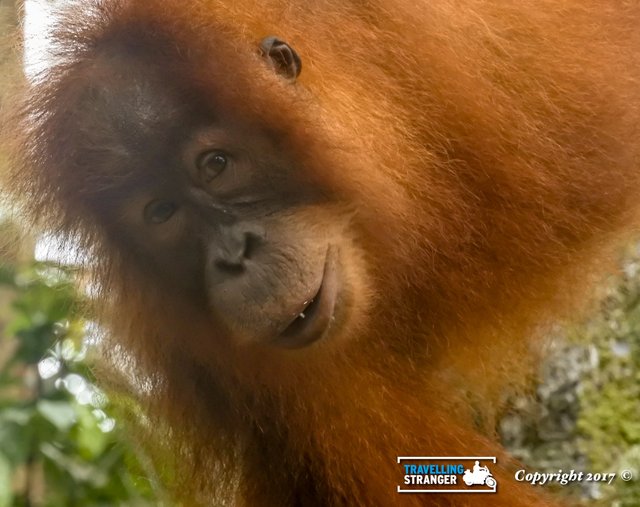
Orangutang, Bukit Lawang National Park, Sumatra, Indonesia.
Queste forse sono nozioni scontate per i fotografi più esperti. Per i neofiti come me tuttavia, possono essere concetti nuovi da assimilare e da sperimentare. Dopo aver visto i video decisi di darci dentro!
Nel corso dell'anno ho cercato quindi di mettere in pratica le parole di Joel in fatto di fotografia "wild life" scoprendo comunque che non è affatto facile seguire i suoi consigli. Riuscire ad avvicinarsi ad un animale nel suo habitat è difficilissimo ancora prima di preoccuparsi di scattare qualche foto! Per fortuna il mio mentore italo americano, conscio di tali difficoltà, non mancò di menzionare nei suoi video che i parchi nazionali, gli zoo e le riserve naturali sono un ottimo punto di partenza per un principiante.
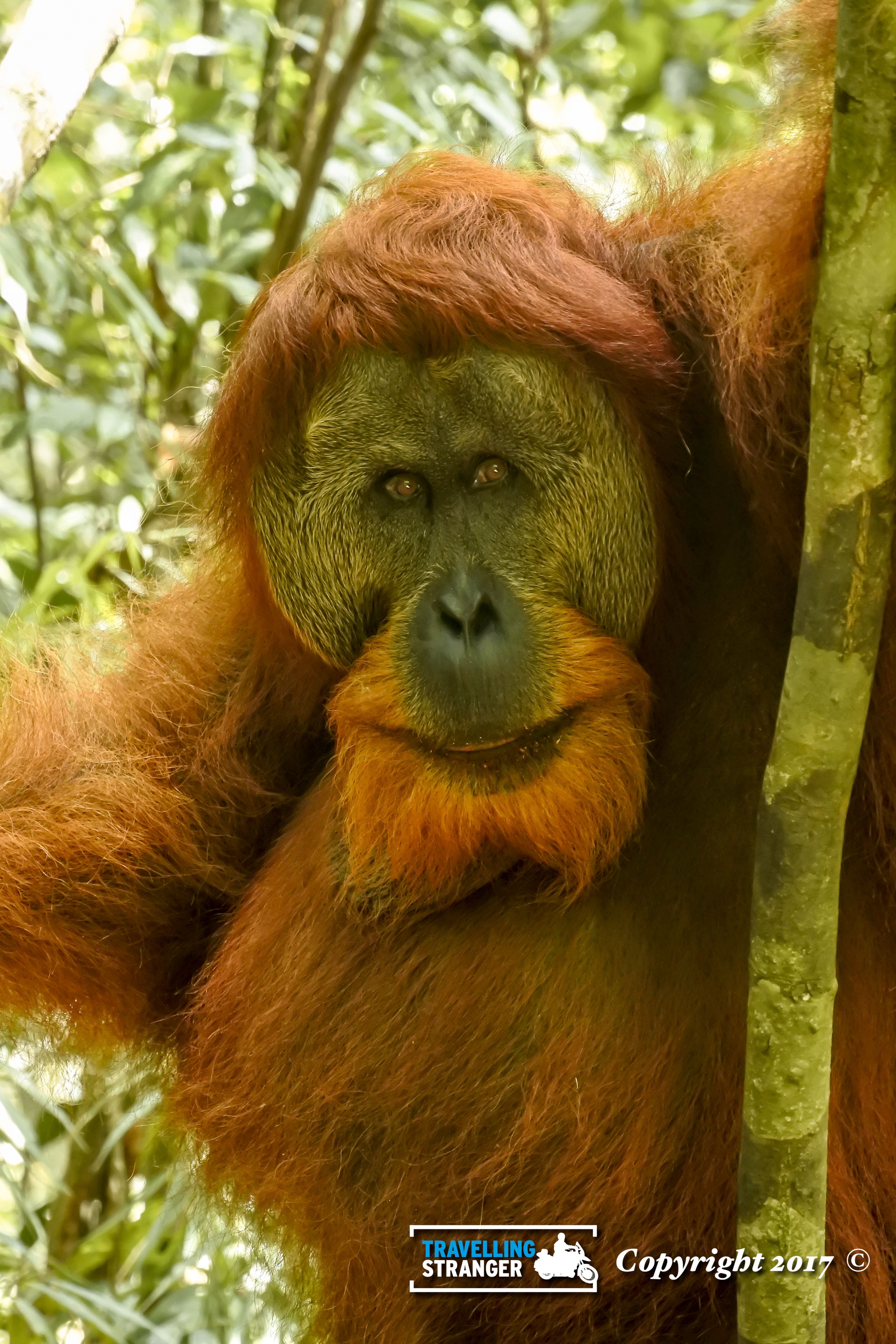 Adult male orangutang, Bukit Lawang National Park, Sumatra, Indonesia
Adult male orangutang, Bukit Lawang National Park, Sumatra, Indonesia
La visita al Parco Nazionale di Bukit Lawang in Sumatra, vicino alla città di Medan, fu per me un momento particolarmente eclatante. Da molti anni il parco si dedica alla riabilitazione di orangutang feriti, o resi orfani, vittime della deforestazione in atto in atre parti dell’Indonesia (Borneo, Java). Gli animali che giungono al parco vengono curati e piano piano rilasciati in libertà. Tuttavia in seguito al rapporto di dipendenza instaurato durante la riabilitazione essi perdono gran parte del timore nei nostri confronti e mantengono un rapporto di fiducia (sia pure circospetto) con l'uomo. Molti orangutang del parco si lasciano avvicinare fino a qualche metro di distanza senza battere ciglio e di conseguenza scattare fotografie di questi straordinari primati non è difficile. Una buona lente da 300mm permette dei bei risultati.
Of course the above is nothing new to the experienced wild life photographer but I felt they were useful tips for complete novices like myself. I decided I needed to try Joel's tips out!
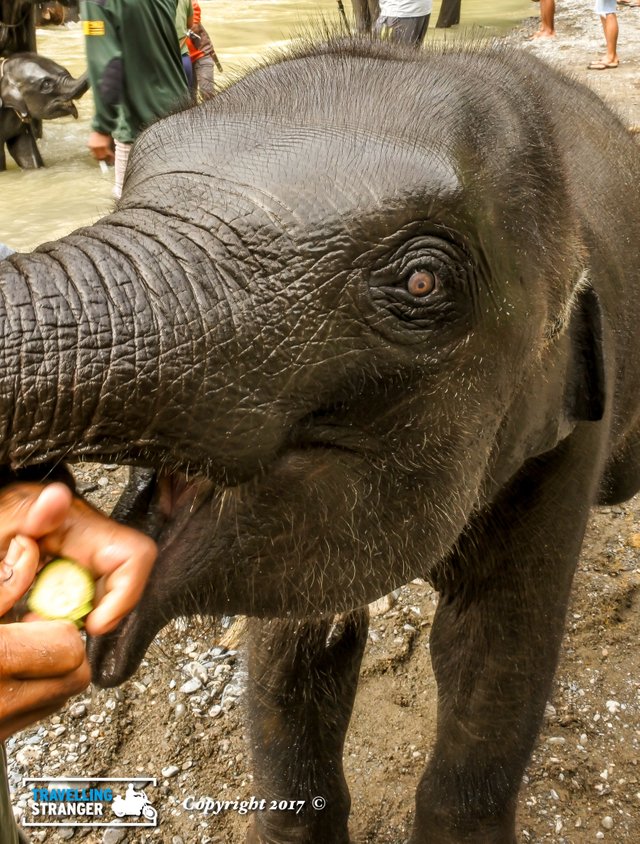
Elephant cub, Tangkahan Rehabilitation Centre, Sumatra, Indonesia.
So, over the course of the past year I made an effort to put Joel’s words into practice and in the process discovered that it’s not as easy as one might think. Wild life photography is hard at any level as getting close to an animal in it's natural habitat is hard enough on it's own let alone taking any decent pictures. Luckily Joel, well aware of the difficulties, suggests in his videos that that national parks, wild life sanctuaries and zoos are all good places to for beginners.
The Indonesian National Park of Bukit Lawang in North Sumatra is a location that I enjoyed very much. This park isn’t far from the port town of Medan and is known for being an established orangoutang rehabilitation centre. Orphaned and injured apes are brought here from other parts of the country that have been ravaged by deforestation (Java, Borneo). The animals are cared for, fed and healed and slowly nursed back into the wild. However, many apes loose their fear of humans during the rehabilitation process and even after years in the wild will allow humans to approach them up to within a few feet's distance. Taking pictures of these extraordinary apes is therefore not difficult, actually it’s pretty easy. Of course, flash photography is not advised and you need to keep an eye out for any sign of frustration especially from the bigger adult orangutangs who's mission it is to protect their young. Generally there are no issues at all. A 300mm lens is sufficient to capture some extraordinary scenes.
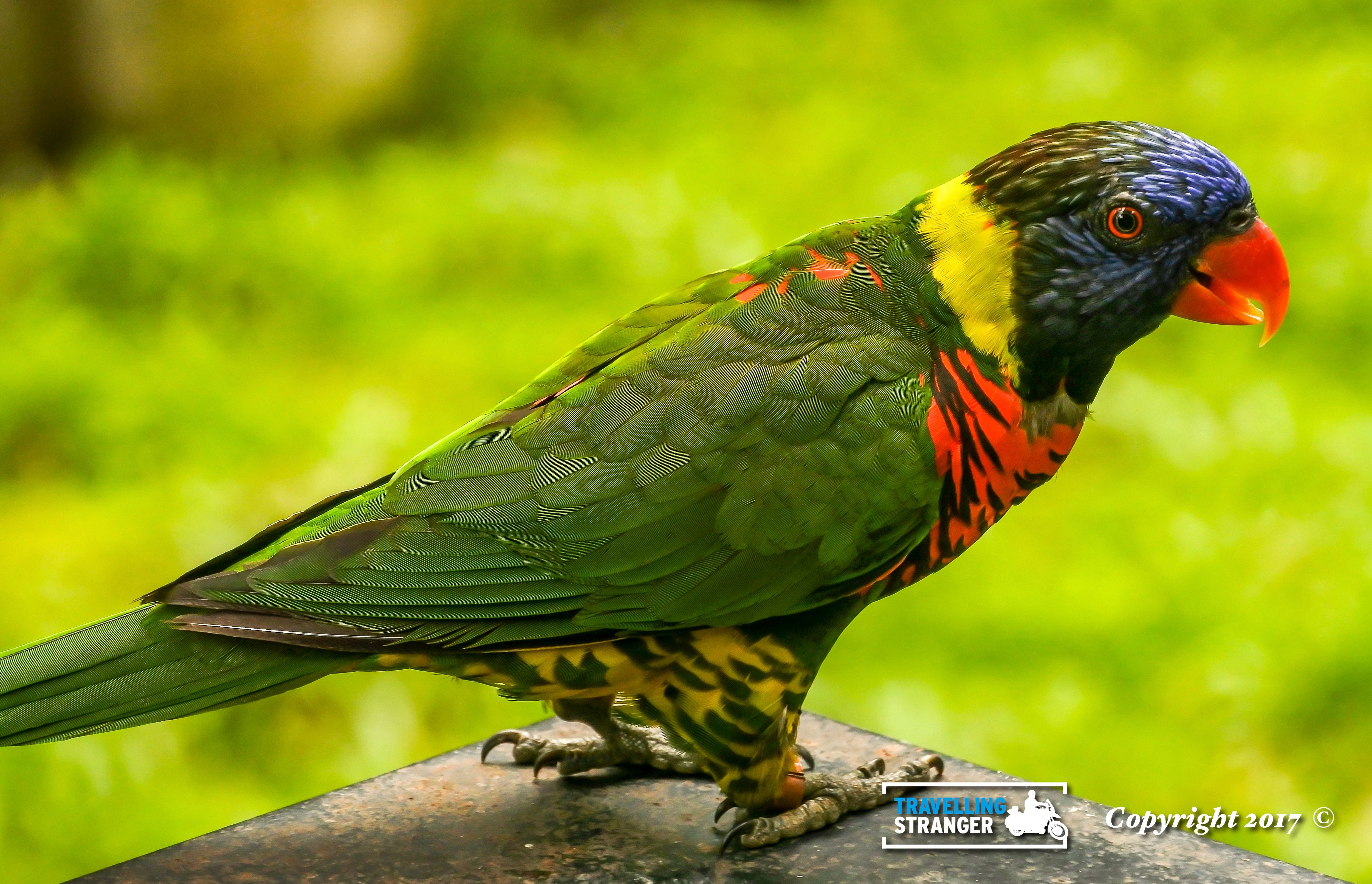
Rainbow Lorikeet, Kuala Lumpur Bird Park, Malaysia.
La poca esperienza che ho accumulato nei mesi scorsi mi ha insegnato che per fotografare animali occorre parecchia pazienza, avere un minimo di predisposizione per lo "stalking" e soprattutto essere sempre pronti in agguato con diaframma ed otturatore sempre aggiustati per lo scatto. Un autofocus veloce e preciso è utile come pure può essere necessario lo “scatto continuo” per inchiodare una foto passabile.
Si può usare uno smart phone per fare delle foto wild life? Certo che si. Tuttavia è opinione diffusa che gli smart phone attuali non sono ancora in grado di pareggiare la qualità delle immagini ottenute da una CSC od una DSLR.
Ma la macchina alla fine poco importa. Lo stesso Joel Sartore ricorda a tutti i suoi “followers” che la migliore macchina fotografica del mondo è sempre quella che si ha disposizione, a portata di mano!
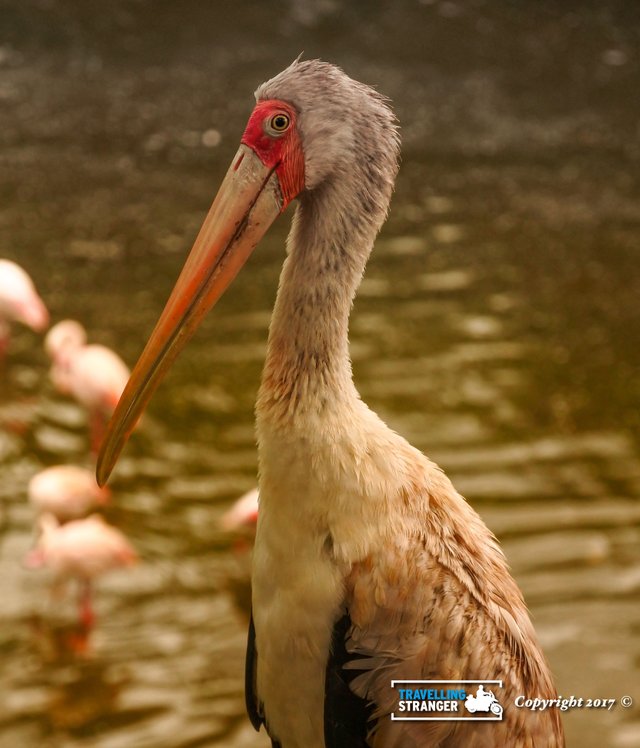
Yellow Billed Stork, Kuala Lumpur Bird Park, Malaysia.
The past few months have taught me that taking pictures of animals is tricky. Your camera needs to be set up with the right aperture and shutter speed and ready to catch what is often a fleeting moment, an instant in which a monkey, ape, cat or dog, turns its gaze to the camera or looks away with an interesting gaze. The eyes are certainly key! A fast and efficient autofocus is good to have. Sometimes a continuous shot function is very useful too.
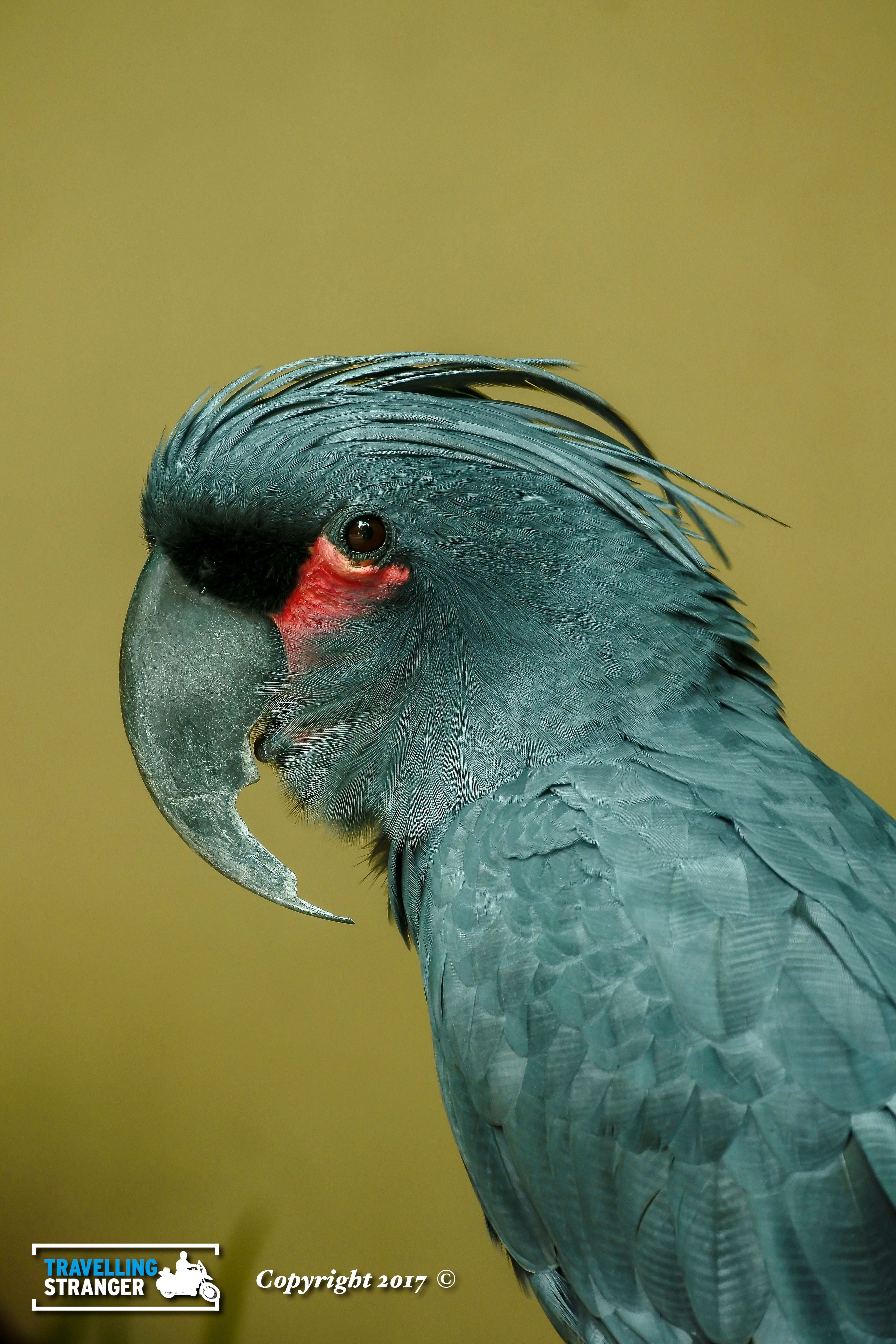
Black Palm Cockatoo, Kuala Lumpur Bird Park, Malaysia.
Will a smart phone allow for good wild life pictures? Yes, for sure! But it’s general opinion that the quality of pictures you get from a smart phone isn’t quite as good as what can be obtained from a CSC or DSLR camera.
In the end though the type of machine you have is hardly relevant. Joel Sartore always makes a point in reminding his followers that the best camera in the world is the one you have available!
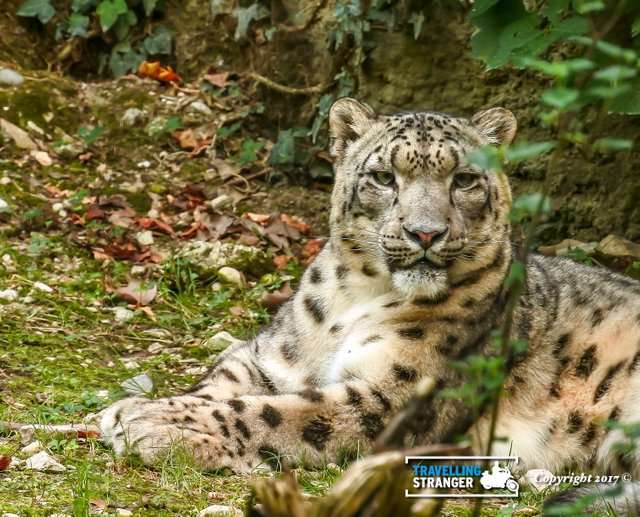
Snow Leopard, Parco Natura Viva, Verona, Italy.
That picture of the snow leopard is beautiful. What an gorgeous animal.
They are truely beautiful animals. Pretty big and frightening as well.
ohi ohi, mi fai venire voglia di andare allo zoo...adesso..Bellissime
Hahah ....grazie! Se ci vai devi postare! Foto subacquee? La Sardegna mi sembra un posto ideale 😃
No, grazie.. Tutto sopra l'aqua.....
Che belli e maestosi che sono!:-)
Si, se solo riuscissero a parlare!
Davvero!!!!:-)
Sempre al top!
Grazie!
Cavolo, i due orangutang sembra che si mettano veramente in posa, il primo addirittura accenna un sorriso!!!
😀...Nicola, quando ci sei cosi vicino e ti guardano negli occhi sembra che ti vogliano dire qualcosa. Una (femmina) mi ha addirittura preso per mano!
fantastico!
Congratulations @john-gpr! You have completed some achievement on Steemit and have been rewarded with new badge(s) :
Click on any badge to view your own Board of Honor on SteemitBoard.
For more information about SteemitBoard, click here
If you no longer want to receive notifications, reply to this comment with the word
STOPThis post has been ranked within the top 80 most undervalued posts in the first half of Nov 28. We estimate that this post is undervalued by $12.23 as compared to a scenario in which every voter had an equal say.
See the full rankings and details in The Daily Tribune: Nov 28 - Part I. You can also read about some of our methodology, data analysis and technical details in our initial post.
If you are the author and would prefer not to receive these comments, simply reply "Stop" to this comment.